Polarized light results in images with different colors depending on the nature of the cell walls and cell contents: | ||
 
|
||
| v, xylem vessels; f, xylem fibers; t.e., tracheary elements (xylem). | ||
|
Secondary xylem is composed of several cell types including fibers, which provide mechanical support, and parenchyma which functions in storage and lateral transport. Water is conducted through tracheary elements.
Tracheary elements include vessel members that collectively form vessels and tracheids--tapered cells that are connected by pits. In tomato wood vessels can be seen clearly, as well as many other kinds of tracheary elements that seem to intergrade between vessel members and tracheids. |
||
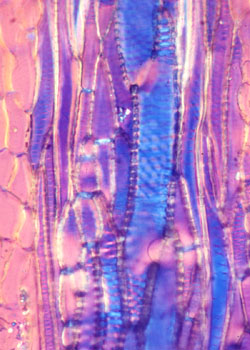
|
 |
|
|
t.e., tracheary element;
f, fiber
This image shows several tracheary elements. The arrows indicate the location of perforation plates. Perforation plates are areas of the endwalls between tracheary elements that have been enzymatically removed to decrease the resistance to water flow. The walls of these tracheary elements are highly pitted (bordered pits) |
||
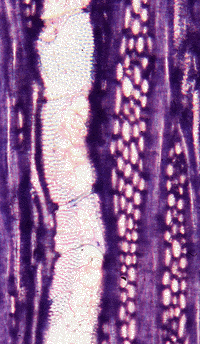
|
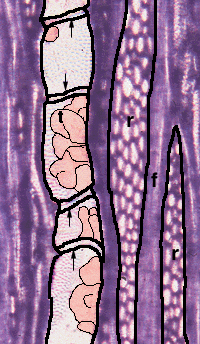
|
|
|
t, tylose;
r, ray;
f, fiber.
Tyloses are apparent in this vessel. We found tyloses frequently in secondary xylem vessels in tomato. | ||
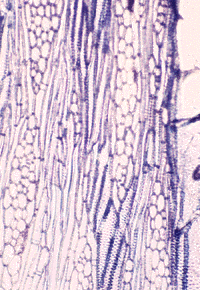
|
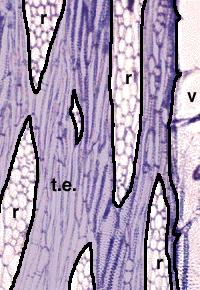
|
|
|
t.e., tracheary element;
r, rays;
v, vessel;
The variety in form of tracheary elements in tomato wood is particularly clear in this image. By extensive overlapping, the tracheary elements form a continuous pathway for water translocation despite the numerous rays. |
||